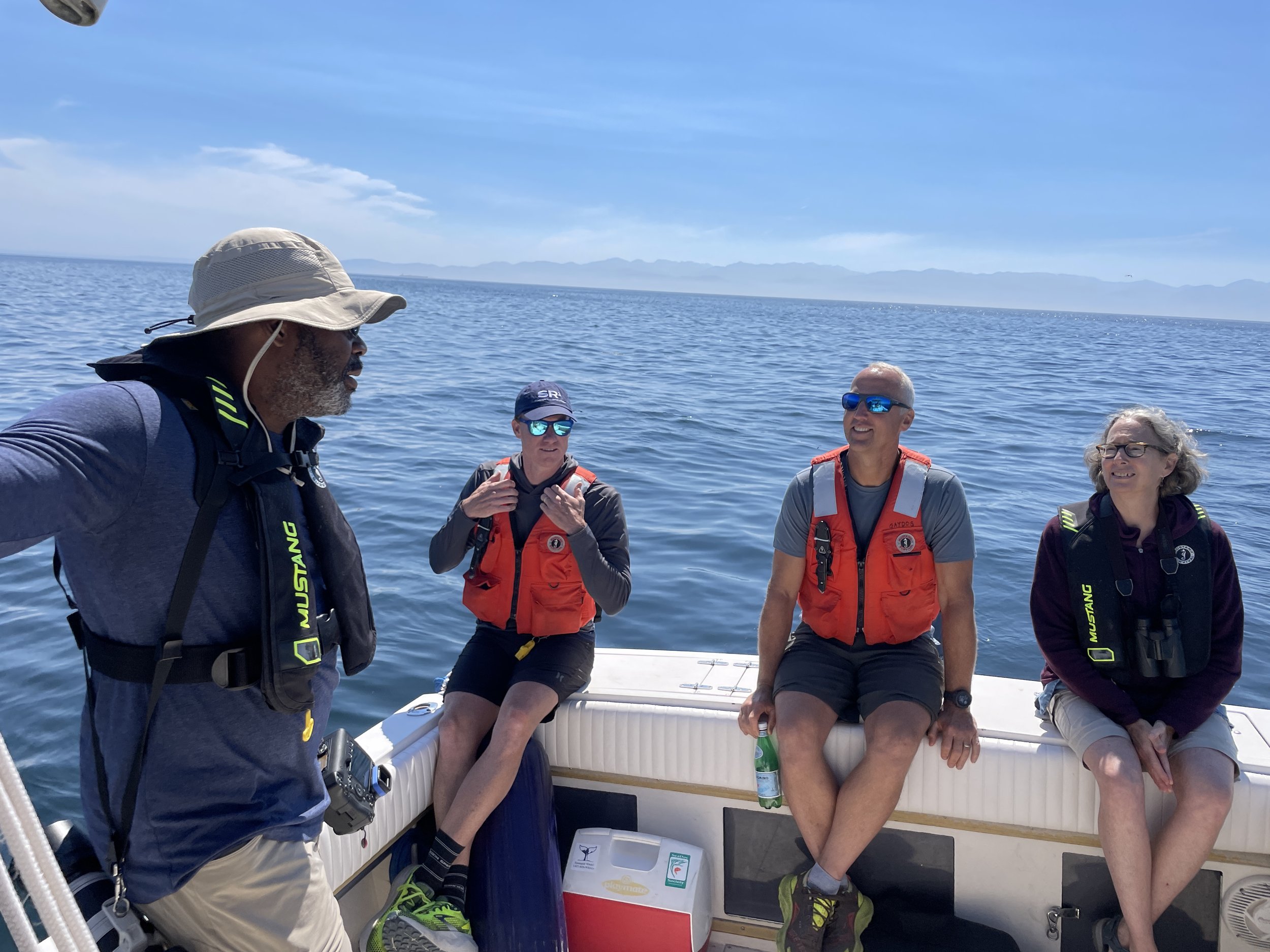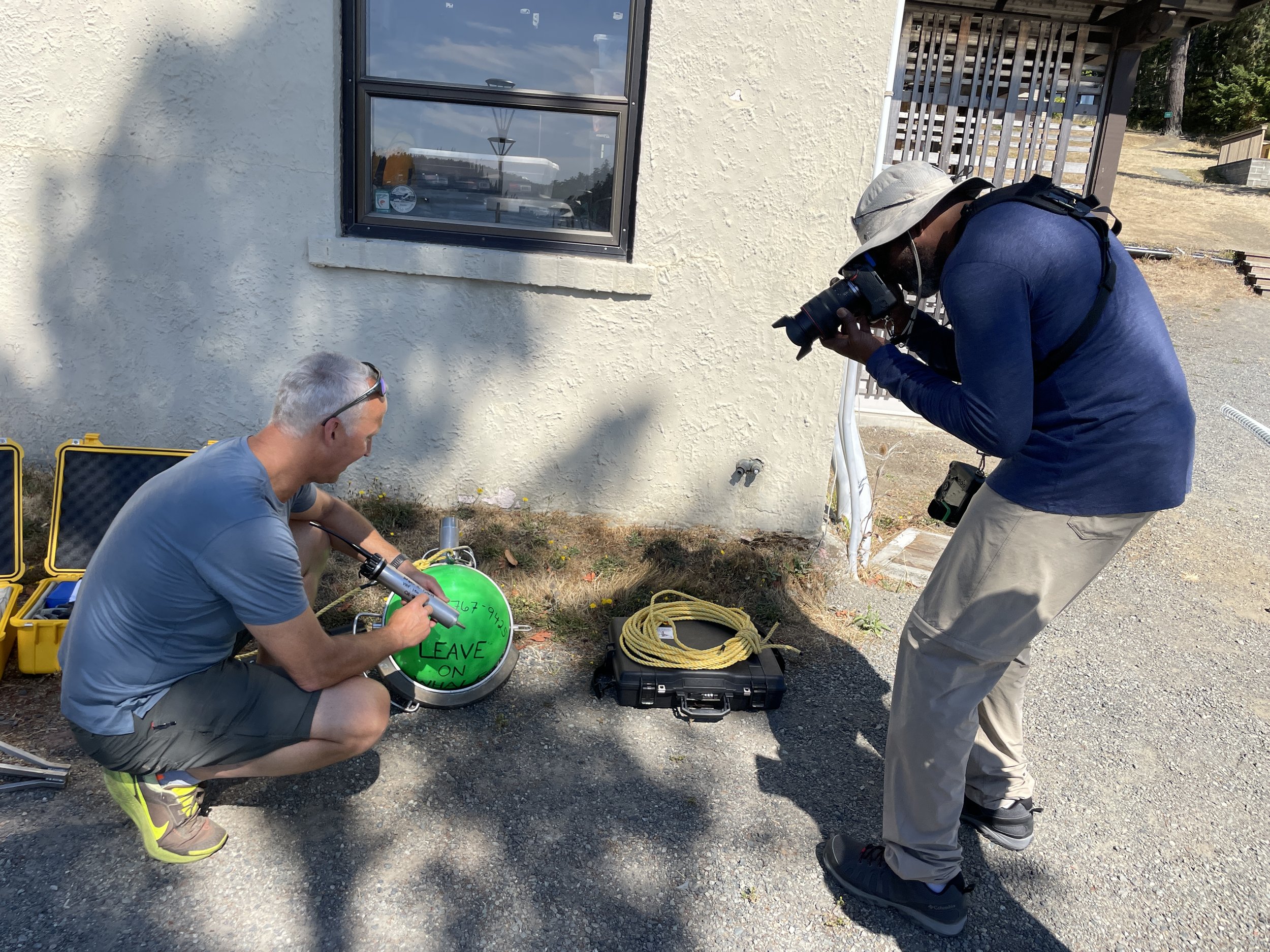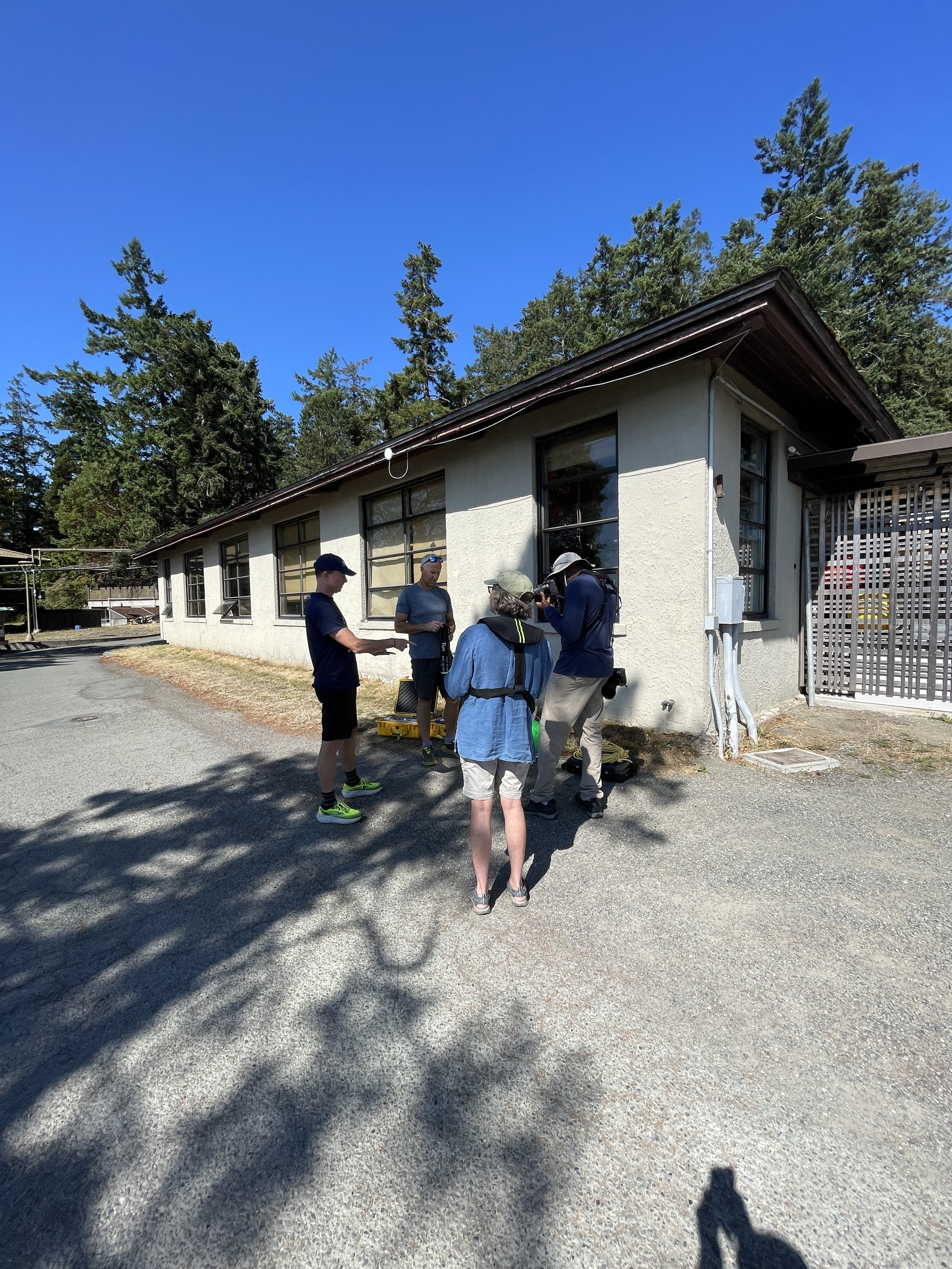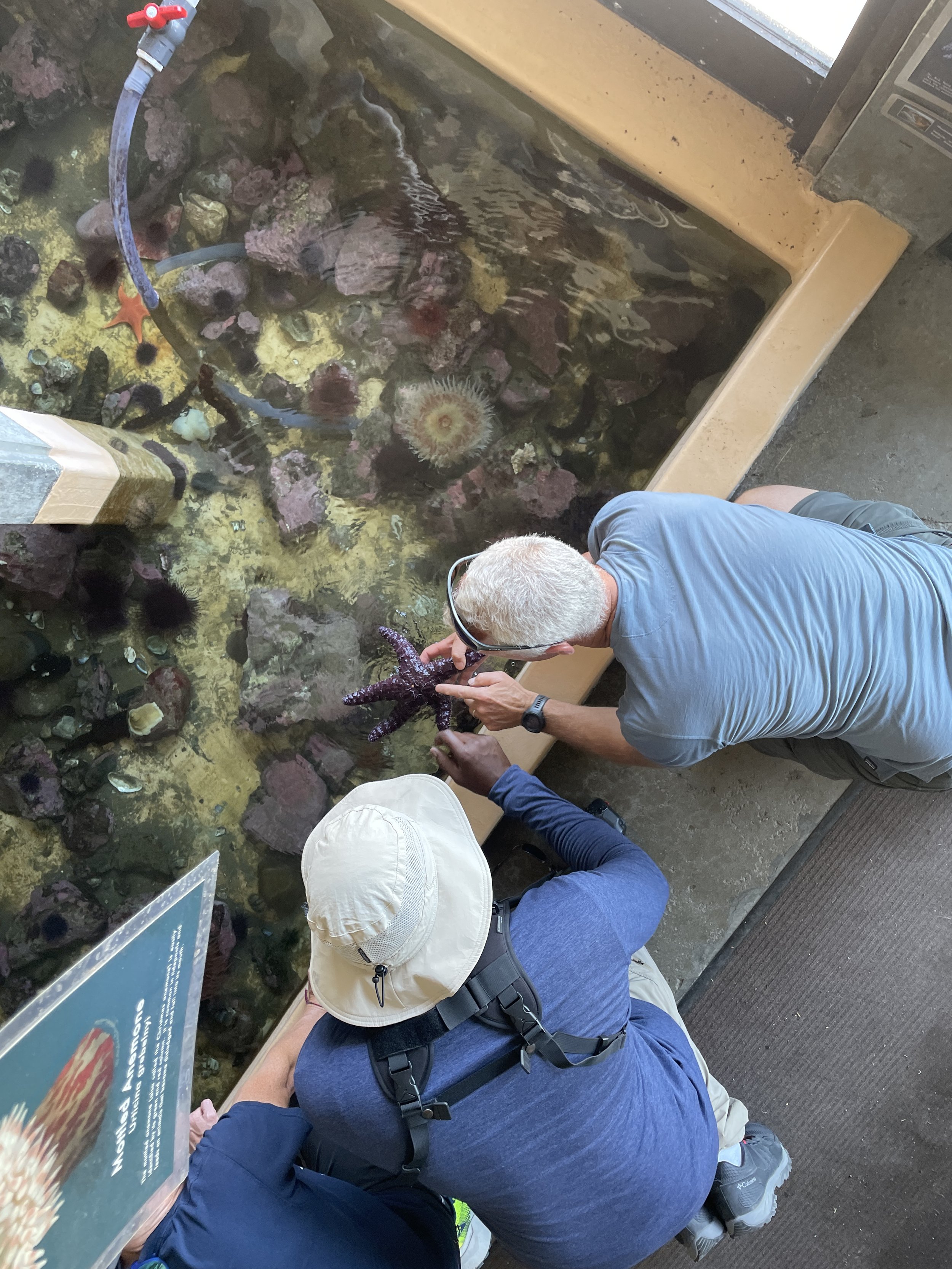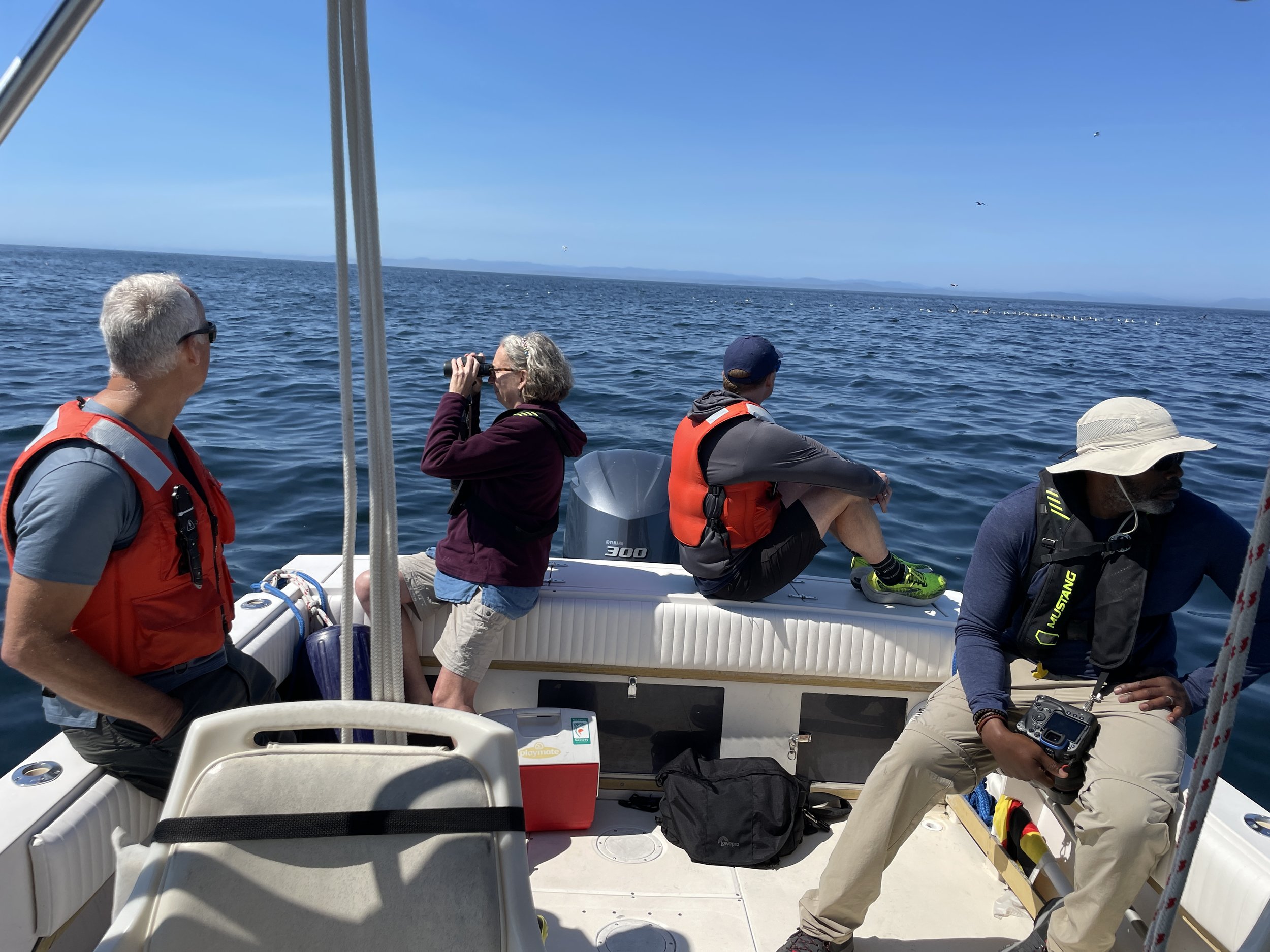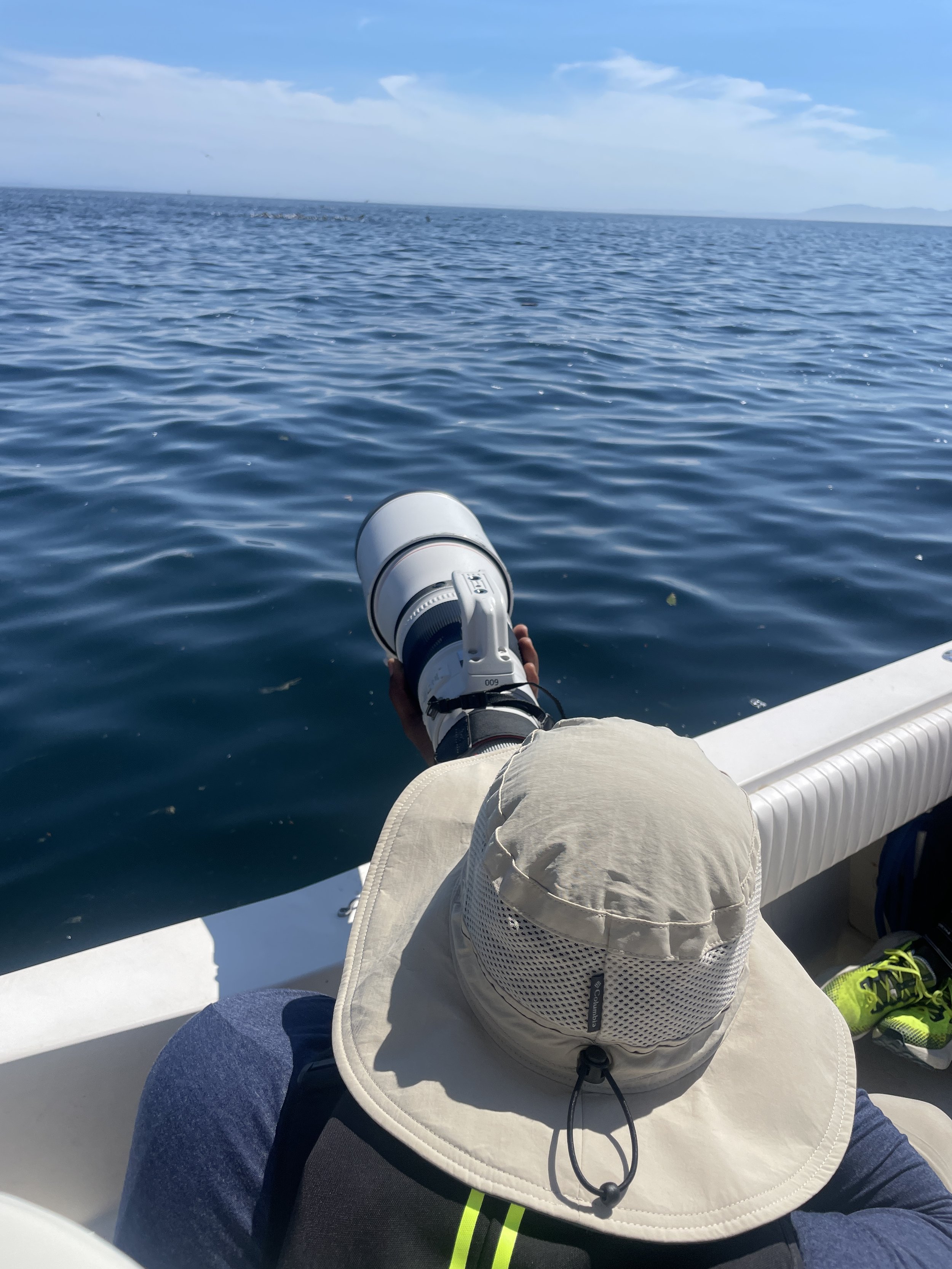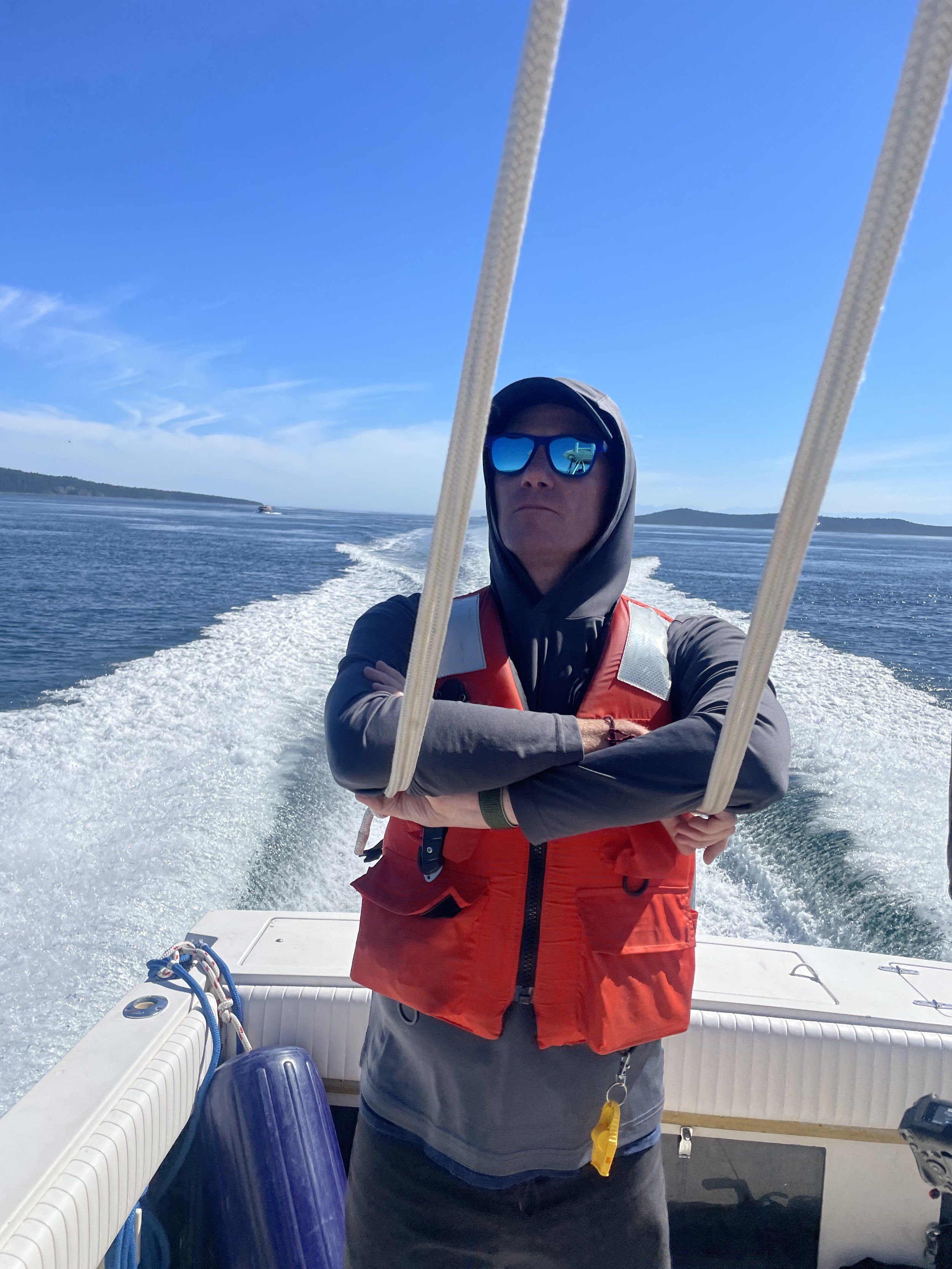By Justin Cox
Midway through the afternoon, as we bobbed in San Juan Channel watching thousands of seabirds feeding on forage fish, it became clear that we wouldn’t likely encounter a humpback whale before it was time to head back to port.
Joe Gaydos and I had Seattle Times reporter Lynda Mapes and photographer Kevin Clark on board with the specific goal of capturing humpbacks for their story about the species’ inspiring recovery over the last few decades, partially inspired by our episode of Salish Sea Wild on the topic. You hope to see humpbacks on a trip like that!
But part of the deal when you venture off into nature is that you may not. This isn’t a penciled-in appointment with your barber.
But how do you report the “humpback comeback” story on a day in which you get no humpbacks? Hop on a boat with Lynda and Joe the answer yields itself pretty organically.
In the wild, you don’t get to pick what you see on a given day. But if you have the right attitude–and both of them have it at their core–you know that hidden details await you in that uncertainty.
It occurred to me as we bobbed around Hein Bank that even though we weren’t staring at literal humpback whales, we had been circling their story for hours. The cacophony of seabirds that ribbonned out across the channel for hundreds of yards was not there by accident. They were feasting on the same forage fish that make the Salish Sea a habitable home for humpback whales.
The same was true for the zigging and zagging Minke whales we saw out in the channel, which were clearly partaking in the feast rather than just zipping by on a commute.
A story about the return of humpback whales is a story about the Salish Sea. And on that August day, the Salish Sea was buzzing with life.
